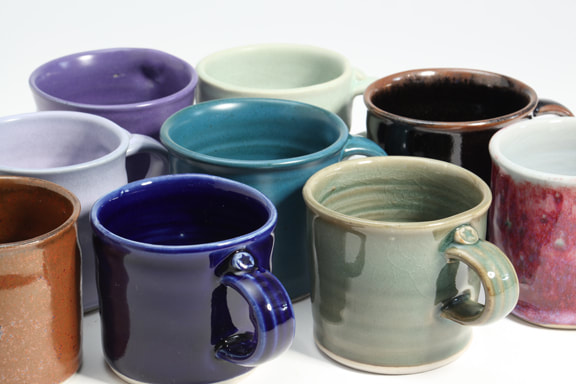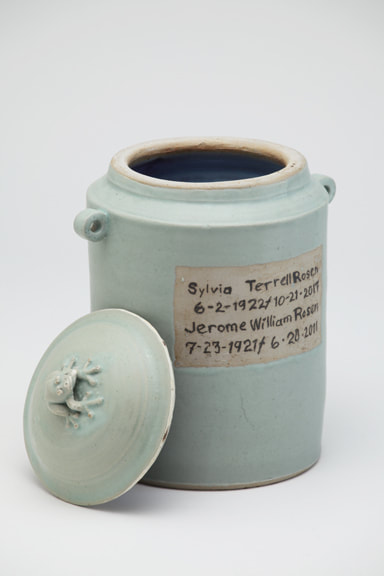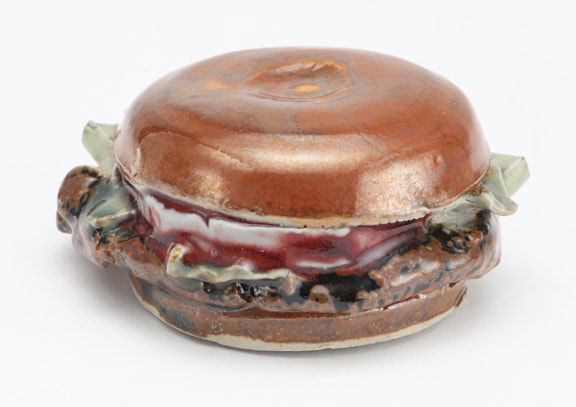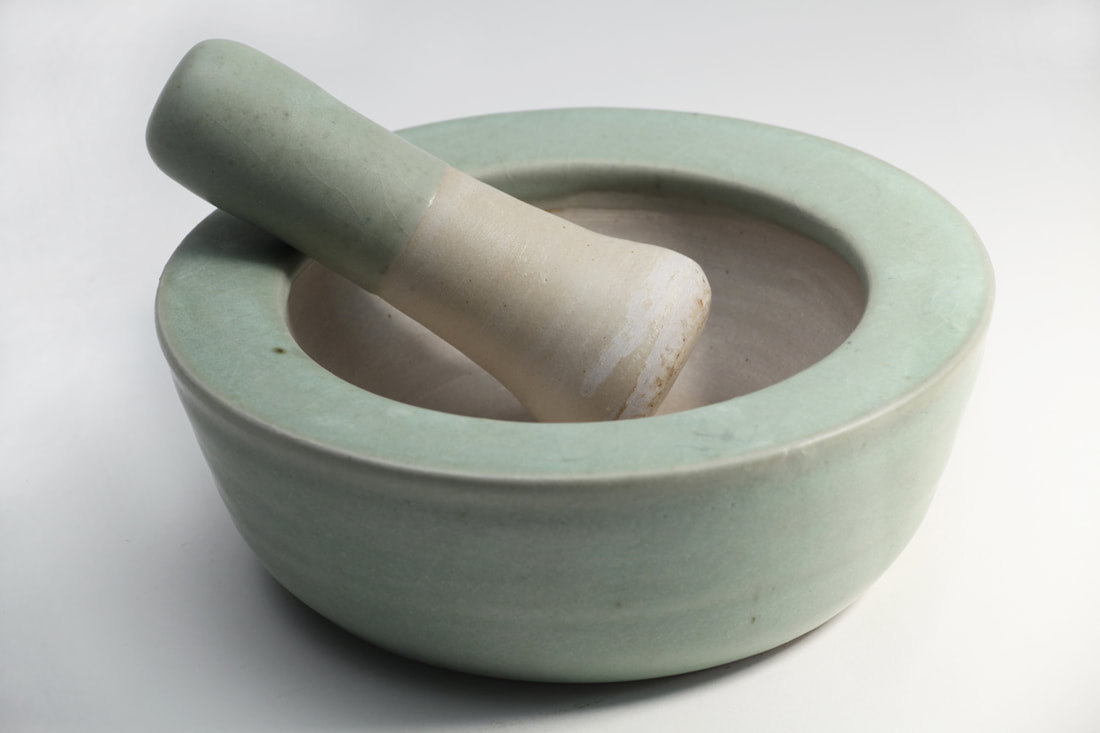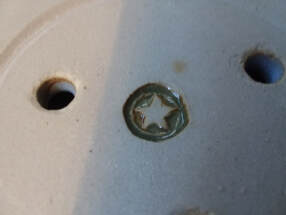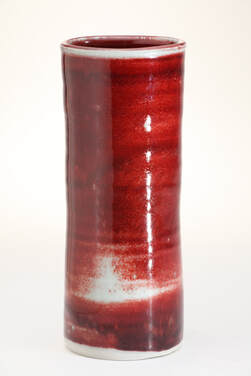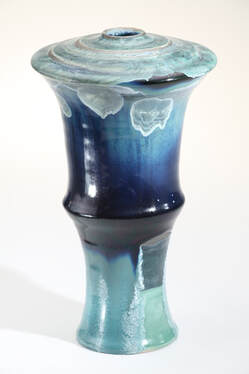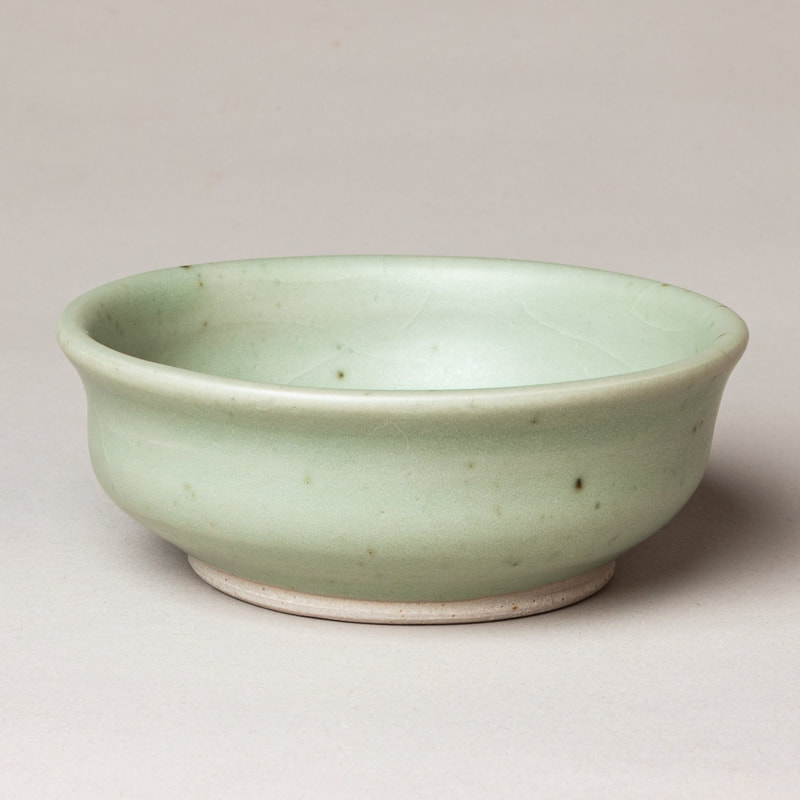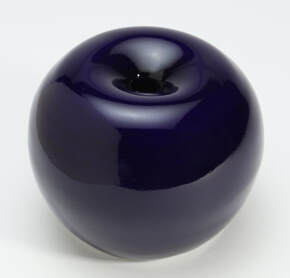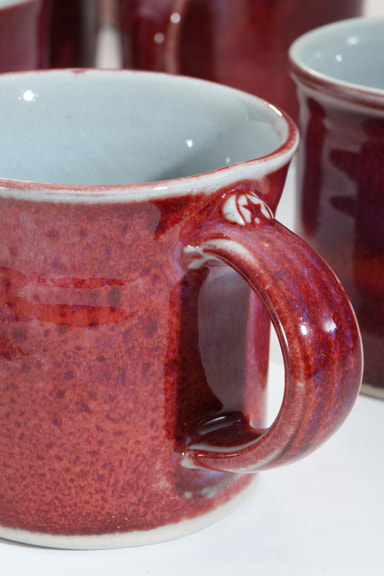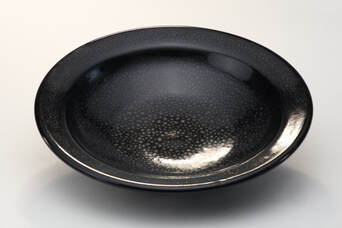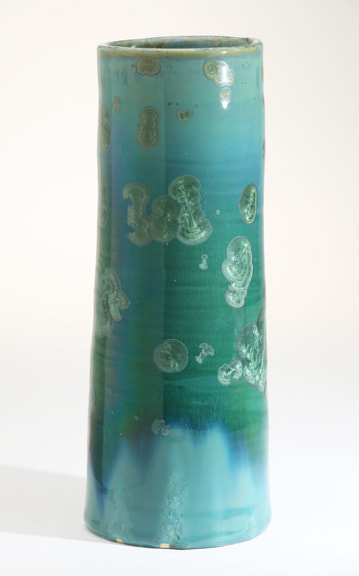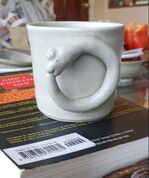Mike Rosen - ceramic arts
click photograph to enlarge, escape to return
|
|
This work is fine art masquerading as tableware. The challenges of tableware are an artistic device. The material is high-fired stoneware and porcelain. It is food-safe and can go in a dishwasher and microwave, or be buried underground for 2,000 years.
Celadon
Classic celadon glaze was developed in China beginning about the time of Christ. It has been found in tombs from that period. The term is used for a range of glazes, usually transparent or translucent, green. True celadon is a high-temperature feldspathic glaze fired in a reducing atmosphere, colored with iron. The quality of this glaze reached its zenith during the Song Dynasty (960 - 1279 A. D.). It was prized in the imperial courts and made in enormous quantities. It was sometimes referred to as "poor man's jade." Song Dynasty celadon has a light jade green color. It is applied thickly, but remains translucent. Its surface resembles unpolished jade, a surface which has been called buttery. Since the Song Dynasty, celadon has been produced all around the world. Some of this is quite well made, but it is almost all shiny. Shiny is a far easier surface to produce on this kind of glaze. A jade-like surface is only possible with some very narrow ranges of composition. My celadon glaze is of the Song variety. The quiet beauty of this glaze belies its pale color. |
|
DISCLAIMER, AND ARTISTIC PHILOSOPHY
Folks, we’re looking at the absolute last generation of high-fired reduction glazes - let’s make the best of it. Obviously, the gasses produced firing a fuel-burning kiln to 2,440º F. (natural gas in my case) pollute the atmosphere. I have justified my own work by thinking that I am producing things of exceeding beauty, which are not possible to make without such a “dirty” exhaust, but this is a luxury which is necessarily near its end.
Even if humans survive the coming climate breakdown and continue to produce art and other high-fired ceramic products, surely ceramics will all have to be fired in electric kilns, or some energy source which does not burn to produce greenhouse gasses. In that event there will be no more reduction firing, no more copper red glazes and no (real) celadons. At that point, the Chinese and other pieces in museums and collections around the world will take on a new mystique, and a new technical interest - as will my own pieces of these glazes.
“Celadon” and “oxblood” glazes (if you call them that) are certainly made at lower temperatures and with alternative materials, but they are never really like the classic glazes if you look at them. The high-fired reduction glazes produced by ancient Chinese potters contain a quiet beauty that you can see, by naked eye, without need of art history and color theory.
Having studied copper red and celadon glazes over a long period of time and space I have somehow gotten to the point where I’m able to make each of these glazes with some consistency. I have made it my life’s ambition to get this, and now it is mine to use the short time I have left to produce it as fine as possible.
Folks, we’re looking at the absolute last generation of high-fired reduction glazes - let’s make the best of it. Obviously, the gasses produced firing a fuel-burning kiln to 2,440º F. (natural gas in my case) pollute the atmosphere. I have justified my own work by thinking that I am producing things of exceeding beauty, which are not possible to make without such a “dirty” exhaust, but this is a luxury which is necessarily near its end.
Even if humans survive the coming climate breakdown and continue to produce art and other high-fired ceramic products, surely ceramics will all have to be fired in electric kilns, or some energy source which does not burn to produce greenhouse gasses. In that event there will be no more reduction firing, no more copper red glazes and no (real) celadons. At that point, the Chinese and other pieces in museums and collections around the world will take on a new mystique, and a new technical interest - as will my own pieces of these glazes.
“Celadon” and “oxblood” glazes (if you call them that) are certainly made at lower temperatures and with alternative materials, but they are never really like the classic glazes if you look at them. The high-fired reduction glazes produced by ancient Chinese potters contain a quiet beauty that you can see, by naked eye, without need of art history and color theory.
Having studied copper red and celadon glazes over a long period of time and space I have somehow gotten to the point where I’m able to make each of these glazes with some consistency. I have made it my life’s ambition to get this, and now it is mine to use the short time I have left to produce it as fine as possible.
